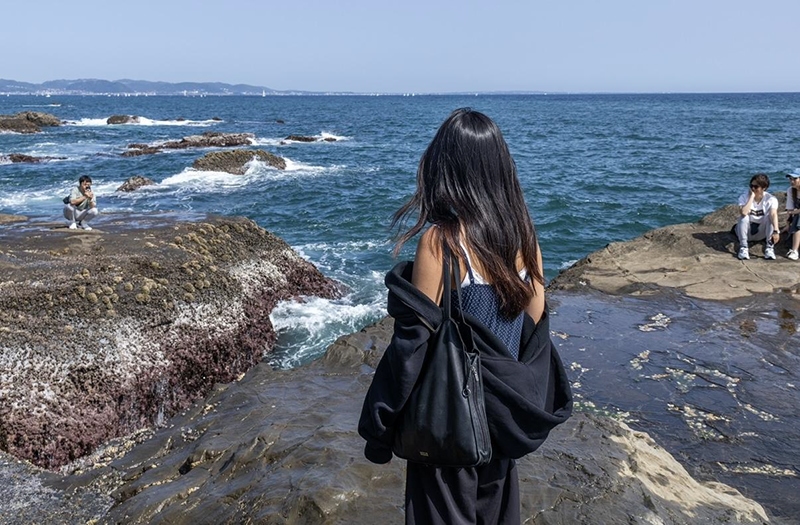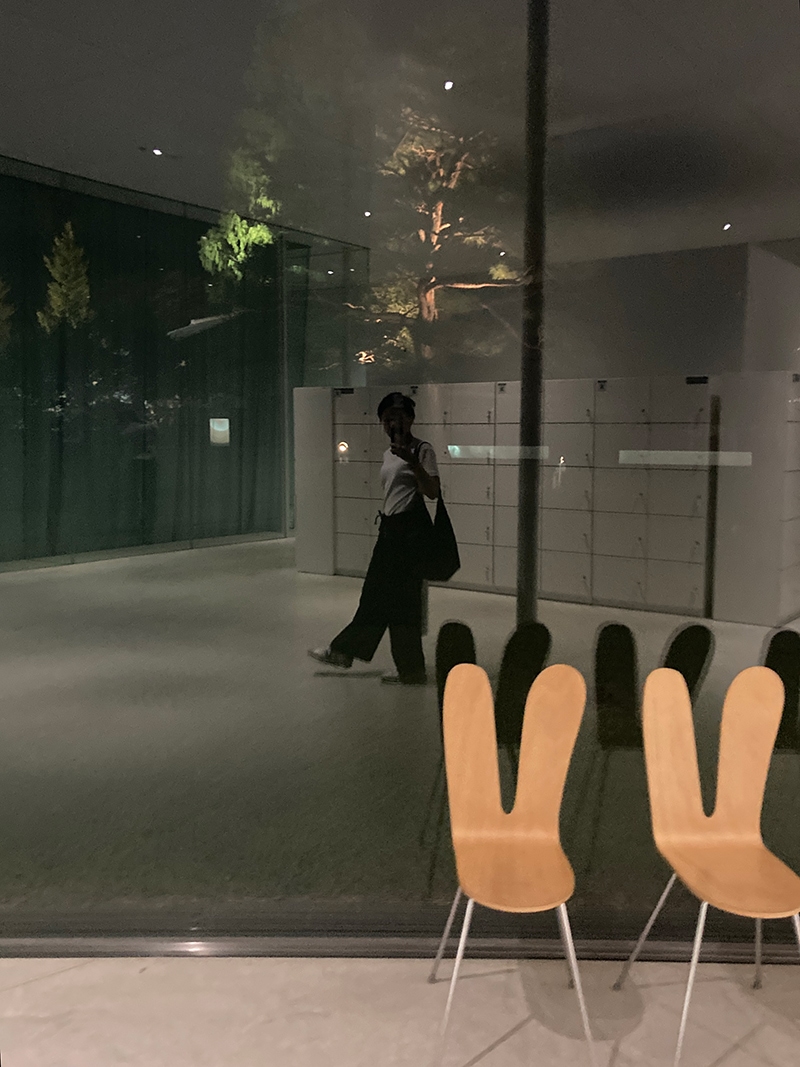Ashlee Lok-Yee Fong
Pratt Institute Accepted: Department of Industrial, Interior and Craft Design April 2025 to July 2025

Visiting Japan has always been a dream of mine, so studying and living here for half a year has been a life-changing experience. I came hoping to gain new perspectives in industrial design, while also taking classes I don’t have access to at Pratt Institute, such as glass and ceramics. Being enrolled in classes across the craft, industrial, and interior departments allowed me to meet students from different disciplines and grade levels. Even though I’m not fluent in Japanese, both students and teachers were kind, helpful, and understanding. Through these experiences, I developed new skills and pushed myself outside my comfort zone while growing as a designer and a person.
I gained knowledge simply by observing other students’ work and noticing the differences in design styles. Pratt focuses a lot on group critique and thinking outside the box, whereas in Japan, they focus more on user functionality and technicality. These are all valuable when designing a product, but it was a mindset change that I had to adapt.
Visiting museum exhibitions, cultural shrines, and even clothing stores also broadened my perspective. Of course, there were cultural and educational differences I had to balance, but shared experiences, from class dinners to conversations with Japanese and other exchange students, helped me build unforgettable connections.
I also had the chance to explore different parts of Japan, such as Okinawa, Hakone, Kamakura, and Kyoto, and experienced vibrant city life and peaceful suburban areas. Despite it raining at times, I have vivid memories of the bike rides home chasing the beautiful pink sunsets, feeling the wind in my face, and hearing the cicadas. Even the Musabi campus itself brought me peace, with its views of Mt. Fuji and its koi pond. Everything seemed more colorful, and I found comfort in the little things. Joining clubs like volleyball and the glass club allowed me to form new hobbies outside of my department and connect with more people outside of class. There truly is no place like Japan — and no place like Musashino Art University.
For future exchange students, I highly recommend learning as much of the language as possible; it will make your experience even more meaningful, and take time to travel outside of Tokyo to explore the beautiful places Japan has to offer. Thank you to everyone who welcomed me and made this unfamiliar place feel like home. I hope our paths can cross again someday.
Ching-Yang Lee
University of Arts Berlin Accepted: Department of Architecture April 2025 to July 2025

Starting off my exchange semester at Musabi in April, we were greeted on the Takanodai campus with typical Japanese spring weather: Plenty of rain, but the trees in front of the library by Sou Fujimoto were in full bloom and the sakura petals flew around in a pretty picturesque hanafubuki fashion. I was looking forward to studying in Japan, not only because of my personal longstanding interest in Japanese architecture, but also because of the very different university experience that Musabi has to offer from my home university in Berlin.
The first thing that struck me was how the campus functions as a self-sufficient hub for creativity with basically all you need as an art and design student just around the corner, from Sekaido, a free-of-charge copy center and a Risograph station available to all students to a decent bakery for early classes and a konbini for late-afternoon energy recharges. There are a lot of fascinating places to discover on campus as well, I was particularly amazed to see the koi-pond for students of Japanese painting and amused to encounter other animals such as goats and chickens in different corners – in a way, being at Musabi felt like diving into a small world of its own with many interesting people and a lot of methods of making art and design that were new to me. The facilities on campus also had a lot to offer, I enjoyed the exhibitions held in the university museum or the occasional class presentations popping out in the common spaces, but there is also an impressive chair collection and a collection of Japanese folk-cultural items. Most of all, I spent a lot of time in the library where it was easy to draw, study, or write in a focused atmosphere for hours on end, or to explore its extensive collection of books on design, crafts, and architecture in both Japanese and English – preferably on one of the designer chairs in every other corner of the library. Being used to studying in the city, I really liked being away from the buzz for a change, the natural environment of the campus always felt soothing, even better when you can easily bike to and back from the dorm along the Tamagawa stream.
In terms of the classes, the initial meeting with the teaching staff of the architecture department before the start of the semester was very helpful. They had recommendations, but were mostly open to my interests and I could freely choose courses from the second, third, and fourth years. On top of that, it was a huge advantage as an exchange student to be able to participate in courses across study programs as well so by the end I could complement my architecture classes, which were mostly lecture-based, with a hands-on ceramics class from the industrial design department. Starting into the semester as the only exchange student in my department, two student tutors for different classes were assigned to me who quickly became important social contacts in this new environment.
The studio culture here is quite different though, as the assignments are mostly carried out alone, not in teams, setting up for a more competitive work mode. I was a bit surprised to learn that most of the projects followed a conventional structure and were focused more on the output than on the process. However, the studio I chose had a very unique approach to architectural design that combined sculpturing and artistic collaging with more conventional space planning. We had a lot of discussions on aesthetics and on more fundamental aspects of space design that were deeply inspiring and thought-provoking to me. It was a new and challenging experience, but I learned a great deal and thanks to it, I discovered a lot of nice antique and used bookstores in and around Tokyo along the way. A special experience was also to go on small excursions with the studio, for example private house tours by the designing architect which were a great opportunity to get a closer look at some highly interesting small houses Tokyo is famed for.
To anyone coming for an exchange to Musabi, I would encourage you to choose classes outside of your comfort zone or specialty, it is stressful to learn new things and appropriate new perspectives while it might seem easy for the regular students, but I found it truly rewarding as well. In the same breath, I would recommend learning as much Japanese as possible in order to benefit from your course contents and not having to rely solely on your student tutors/translators. Having studied enough Japanese before the exchange to navigate through my classes, it helped me during my design critiques and in interacting with fellow students. But also outside of the university, knowing a certain level of the language unlocked so many fun and intriguing exhibitions, events and social contacts that I would have otherwise missed out on.
Apart from the life on campus, Tokyo by itself is, of course, a rich source of inspiration with lots of places to discover, but living on the outskirts has proven to be no less enriching. I especially enjoyed hiking in the mountains, biking to the nearby lakes or doing trips to seaside towns in Kanagawa prefecture as summer approached near the end of the semester.
My list of buildings I want to visit, places to travel to and topics to explore in Japan has only gotten longer, but the semester at Musabi has been an incredibly memorable, albeit complex experience of learning about another culture and of personal growth. For that, I’ll always be grateful and it only leaves me with a stronger wish to visit again soon.

